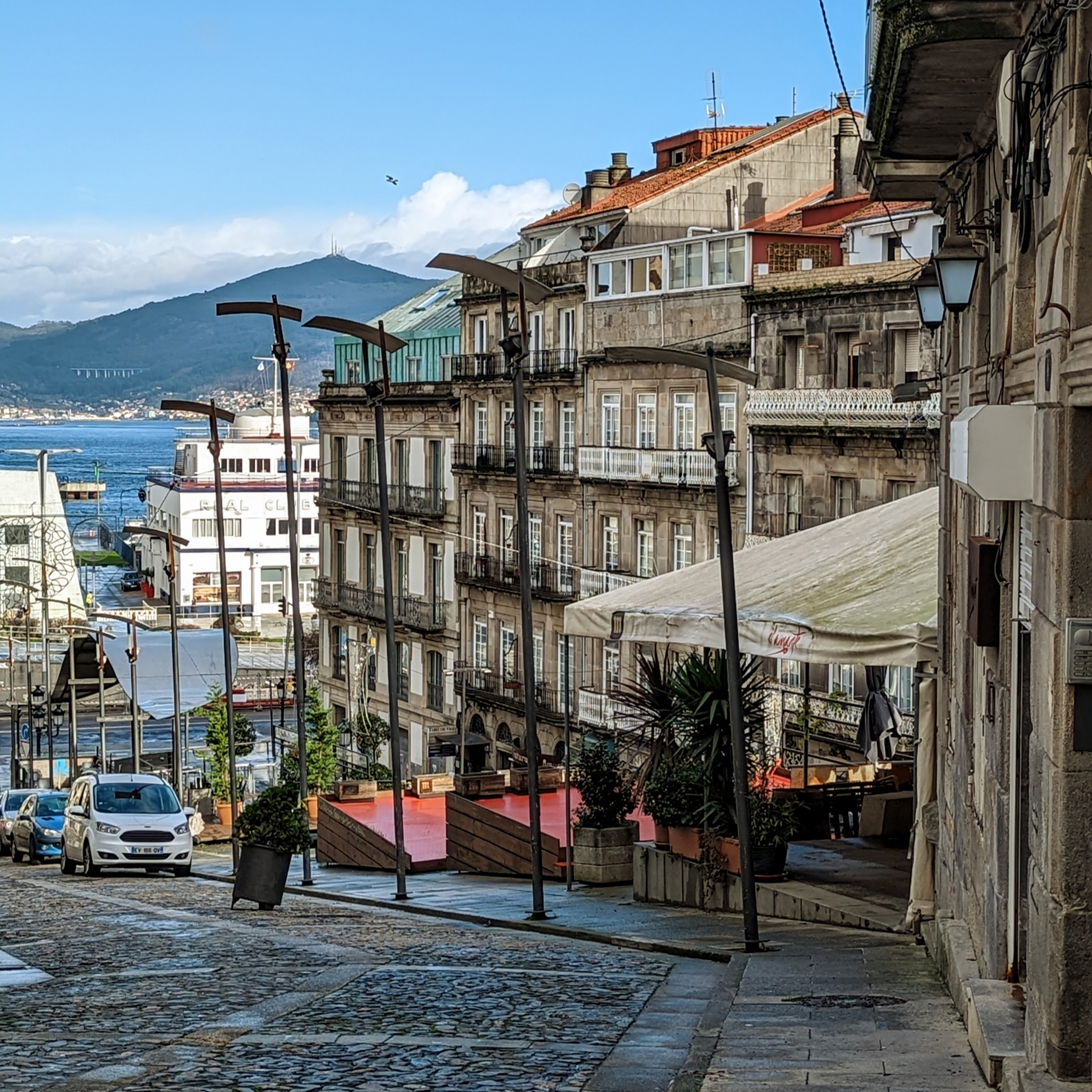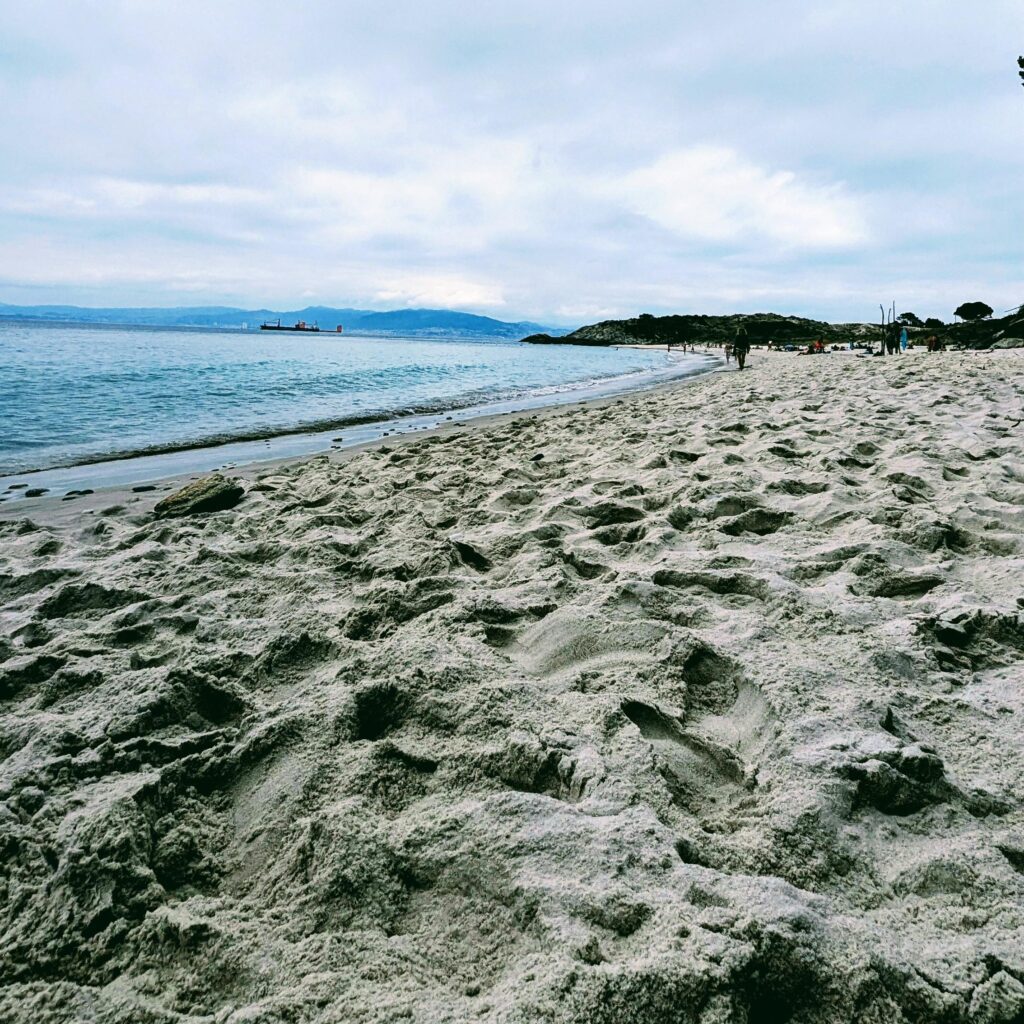A Perfect Blend of Urban Energy and Natural Beauty
Vigo, the largest city in Galicia, is located on the Atlantic coast in northwestern Spain and attracts numerous visitors with its mix of urban charm and stunning natural landscapes. With around 295,000 residents, Vigo is not only a significant cultural and economic hub but also an attractive vacation destination for tourists seeking a diverse combination of beaches, history, and modern leisure activities.
The city combines its historical significance as a major fishing and industrial port with modern innovations in the automotive and technology sectors. Vigo is a bustling center of the Atlantic region, where relaxation, nature, and culture come together in perfect harmony.

The Fascinating History and Evolution of Vigo
The history of Vigo dates back to Roman times when the city was just a small fishing village. Over the centuries, Vigoevolved into an important trading hub, growing rapidly during the Middle Ages due to its strategic location. In the 16th and 17th centuries, Vigo was frequently targeted by pirate attacks, which helped forge the city’s resilient identity.
One of the most significant historical events was the Battle of Rande in 1702, when British and Dutch forces attacked the Spanish silver fleet. This moment remains a key part of the city’s collective memory and is commemorated in cultural events. The remnants of this battle can still be found in the Ría de Vigo.
Industrialization and Growth
In the 19th century, with the rise of industrialization, Vigo experienced rapid growth. The city became the center of Galician fishing and developed into one of the largest fishing ports in Europe. Today, Vigo’s port is not only known for its fishery but also for its role in international trade and the automobile industry.
A Modern City with Maritime Roots
Today, Vigo is a vibrant and dynamic center that has preserved its historic roots. As one of the largest fishing ports in Europe, the port continues to play a central role in the city’s economy. The Port of Vigo handles around 800,000 tons of fish and seafood annually, making it one of the most important hubs for seafood in Europe. Additionally, the city is home to Spain’s largest automobile plant, operated by the PSA Group, which is a key pillar of the local economy.
Population and Economy
With approximately 295,000 residents and a metropolitan area of over 500,000, Vigo is the economic heart of Galicia. The combination of fishing, commerce, and industry makes Vigo one of the most dynamic cities in Spain. Besides automobile production and fishing, marine research and tourism are also major contributors to the local economy.
Cultural and Historical Attractions in Vigo
Vigo offers not only economic significance but also numerous cultural and natural attractions. The Old Town (Casco Vello), centered around Plaza de la Constitución, is perfect for exploring. Visitors can stroll through picturesque narrow streets, admire historical architecture, and enjoy local specialties like Pulpo a la Gallega or fresh oysters from the Ría de Vigo in traditional taverns.
Other cultural highlights include the Museo de Arte Contemporáneo (MARCO), showcasing modern art, and the Museo del Mar de Galicia, dedicated to the history of fishing and the sea. These museums reflect Vigo’s balancebetween contemporary art and the preservation of its maritime heritage, giving the city its unique identity.
No Images Found!
Discover Vigo’s Coastal Beauty and Natural Wonders
Beyond its urban charm, Vigo is also famous for its stunning natural landscapes and beautiful beaches. The most well-known beach is Playa de Samil, offering crystal-clear waters and plenty of leisure activities, including beach cafés, swimming pools, and playgrounds. For those seeking a quieter experience, less crowded beaches like Playa de O Vaoprovide a more serene escape.
A Paradise for Nature Lovers
A highlight for nature enthusiasts is the Cíes Islands, part of the Atlantic Islands of Galicia National Park. Often referred to as the “Caribbean of Spain,” these pristine islands are known for their white sandy beaches and crystal-clear waters. Visitors can hike, snorkel, or simply enjoy the natural beauty. The islands are easily accessible by ferry from Vigo’s port.
Savor the Flavors of Vigo’s Seafood Cuisine
Vigo’s cuisine is deeply influenced by its fishing tradition, and visitors are encouraged to try the city’s famous seafood. The city is particularly renowned for its oysters, which can be enjoyed fresh and directly from the Rúa da Ostras. In addition to oysters, octopus and mussels are culinary highlights offered in many restaurants throughout the city.
Must-Try Dishes
One dish not to miss is Pulpo a la Gallega, a traditional octopus dish served with paprika and olive oil. Pair it with a glass of excellent Galician white wine, which complements the seafood perfectly. Another local favorite is Galician empanadas (stuffed pastries), a regional delicacy that is loved by both locals and tourists and can be found in many restaurants.

Discover Vigo’s Activities and Day Trips
Vigo is not only a cultural hub but also offers a wide range of leisure activities. Families can visit the Vigo Nature Park, where children can learn about the local wildlife. For those who love hiking, a climb up Monte O Castro provides stunning views of the city and the Ría de Vigo.
Outdoor Adventures and Sports
For sports enthusiasts, Vigo offers a variety of activities such as sailing, surfing, and kayaking along the coast. Cycling along the promenade or through the city’s green parks is another popular way to explore. Day trips to nearby Galician cities like Santiago de Compostela or even to Portugal are easily accessible from Vigo.
FAQ´s
Vigo is well connected and accessible through various modes of transportation:
By Air: Vigo-Peinador Airport (VGO) is located about 10 km from the city center, offering connections to Madrid, Barcelona, Bilbao, and Paris. Other nearby airports include:
- Santiago de Compostela Airport (SCQ): Located 100 km away, offering many international flights.
- A Coruña Airport (LCG): About 160 km away, offering national flights.
- Porto Airport (OPO) in Portugal: Around 150 km south of Vigo, with numerous international connections.
By Train: Vigo-Guixar station provides direct services to Madrid, Santiago de Compostela, A Coruña, and other Spanish cities.
By Bus: Long-distance bus companies ALSA and Avanza offer regular services from Vigo to cities across Spain and Portugal.
By Car: Vigo is well connected via the AP-9 motorway, which links the city to Santiago de Compostela, A Coruña, and Portugal. The modern road infrastructure makes it easy to reach Vigo by car.
Vigo offers a variety of activities, from beach visits and hiking in nearby nature parks to trips to the Cíes Islands. The city also boasts historical attractions such as the Old Town (Casco Vello), Monte O Castro with its stunning views, and numerous museums. For water sports enthusiasts, Vigo is a great destination for sailing, surfing, and kayaking.
The ferry routes are operated by Naviera Nabia and Mar de Ons.
The best time to visit Vigo is between May and October, when the weather is warm and sunny, and the beaches can be fully enjoyed. During this period, visitors can make the most of outdoor activities, including hiking, boat tours, and visits to the Cíes Islands. Spring and autumn are also ideal, thanks to the mild climate, which allows for exploring the city without extreme heat or large crowds.
Vigo is a family-friendly destination with child-friendly beaches, large parks, and a variety of family activities. Kids can have fun at beaches like Playa de Samil and in the playgrounds, while parents relax. Boat trips to the Cíes Islands are another highlight for families. Additionally, many restaurants offer kid-friendly menus, ensuring everyone is satisfied.
Yes, a winter trip to Vigo is definitely worth it! Vigo is famous for its spectacular Christmas lights, which are well known throughout Spain and beyond. Each year, in December, the city transforms into a stunning display of lights that attracts visitors from all over Spain. The festive illumination turns the city center streets into a winter wonderland, complete with Christmas markets and celebrations.
Thanks to its mild Atlantic climate, winters in Vigo are pleasant, with temperatures rarely dropping below 10°C. Visitors can comfortably explore the city’s sights. Beyond the lights, there are plenty of cultural attractions like museums, the Old Town (Casco Vello), and the local gastronomy. The winter atmosphere, combined with the festive spirit, makes Vigo a special destination during the colder months.
